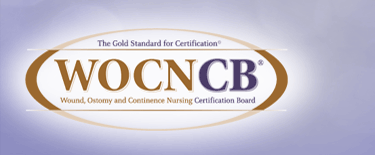Role Delineation
The major function of the WOCNCB credentialing program is to ensure competency and professionalism in the field of wound, ostomy and continence care nursing. It provides assurance that the Certified Wound, Ostomy Continence, and Foot Care Nurse has met specific criteria designed to ensure that he or she is competent in the provision of services.
The development of a quality credentialing or licensing program must follow certain logically sound and legally defensible procedures for developing examinations. These principles and procedures are outlined in federal regulation (Uniform Guidelines on Employee Selection Procedures) and manuals, such as Standards for Educational and Psychological Testing (published by the American Educational Research Association, 1999).
Before a contentâ€valid examination is developed, the knowledge and skills necessary for competent practice in the profession must be determined. The process for identifying these competency areas is a role delineation or job analysis, which serves as a blueprint for examination development. The role delineation also helps to determine the type of examination, such as written or practical, to be developed in order to assess competence.
The primary reason for conducting a role delineation study is to ensure that an examination is content valid. Content validity is the most commonly applied and accepted validation strategy used in establishing certification programs today. In psychometric terms, validation is the way a test developer documents that the competence to be inferred from a test score is measured by the examination. A contentâ€valid examination, then, evaluates knowledge or skills required to function as a competent practitioner in the field.
Thus, the role delineation study is an integral part of ensuring that an examination is contentâ€valid and that the aspects of the profession covered on the examination reflect the tasks performed in practice settings. For both broad content areas and tasks, the study identified their importance, criticality, and frequency ratings. These ratings play an important role in determining the content of the examination.
The role delineation study for the WOCNCB consisted of the following three phases:
- Initial Development and Validation. The role delineation panel identified the domains, tasks, knowledge, and skills essential to the performance of a Certified Wound, Ostomy, Continence, and Foot Care Nurse.
- Validation Study. A representative sample of professionals in the field of wound, ostomy, continence and foot care nursing reviewed and validated the work of the role delineation panel.
- Development of Test Specifications. Based on the ratings gathered from the representative sample of professionals, the test specifications for the certification examination were developed




